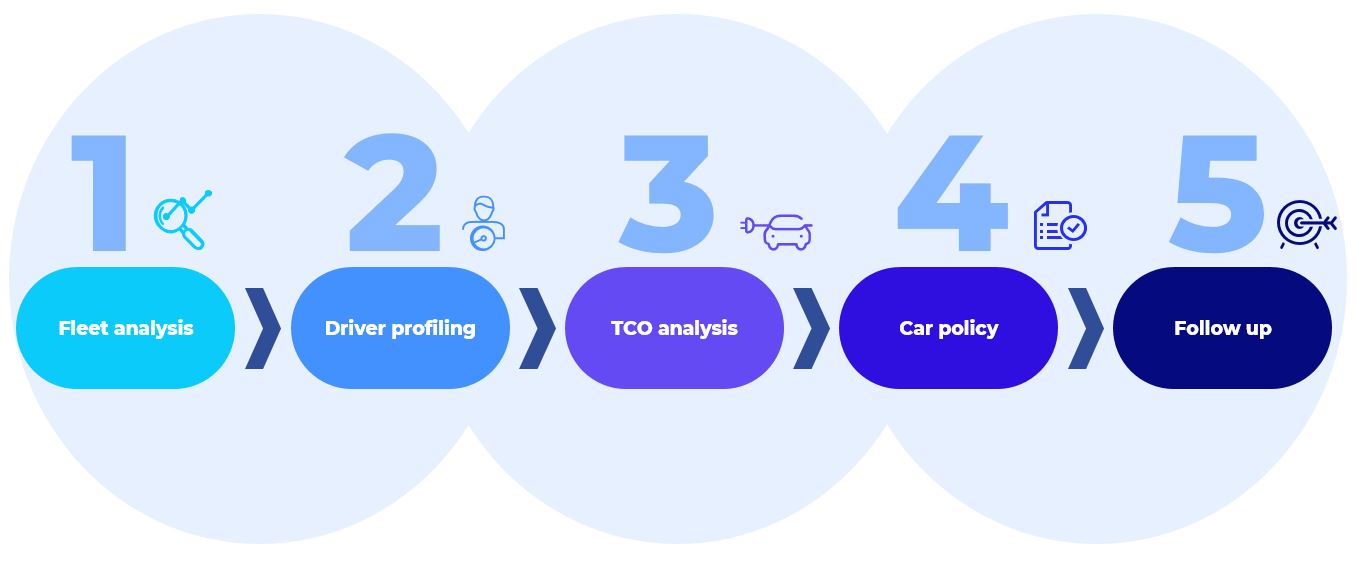What you should pay attention to when introducing electric vehicles in your Car policy
The creation of an internal company Car policy is a demanding project. Here we will try to point out the most important guidelines which you should have in mind when introducing electric vehicles in your Policy.
- Analysis of the current fleet
Before the Car policy is revised, it is necessary to make a precise analysis of the current fleet, i.e. the number of vehicles and their mileage, brands and models, as well as the method and cost of charging. Such analysis will allow you to get insight into how much effort the transition to e-mobility may require and whether it even makes sense in your case.
In early stages of Car policy you should consider the vehicle charging options. For example, it is necessary to determine whether charging is possible at the location of the driver's workplace, whether a subsidy is granted for the installation of a wallbox at private address, and where and with which charging cards the public charging network can be used. In order to avoid surprises, the tax aspects of these three charging options should be taken into account.
Equally important is the assessment of driver's profiles and habits. In addition to usual distances they travel on daily basis, it is also required to determine how often private and professional long-distance trips are made. It is also important to examine the willingness and motivation of drivers to use electric vehicles, as well as the charging possibilities in their private environment.
In ALD we facilitate driver profiling by providing a questionnaire to our clients, through which all relevant information can be simply gathered to perform the precise assessment.
The next step is to review the costs of switching to e-mobility. You should have in mind that, although fully electric vehicles can be significantly more expensive to purchase, their maintenance is less expensive. Compared to diesel and gasoline vehicles, due to their design, they consist of fewer tear parts.
Costs should be set based on a TCO (Total Cost of Ownership) analysis, considering not only the pure purchase costs, but also any incidental costs such as maintenance, tires or charging the vehicle. After such analysis, electric vehicles often come out as more favourable choice.
If the vehicle is financed through a full-service operating lease, not only are the acquisition costs eliminated, but you also know what the monthly rent will be before the lease period begins. This increases the company's liquidity, and in addition, the lessor bears the risk of the residual value at the end of the term.
After you have completed all the analyses according to the previous guidelines, you can now determine your Car policy.
You should now determine the choice of vehicles and cost limits, as well as how and where electric vehicles can be charged. If a subsidy is approved for the installation of a charger at driver's home address, it should be defined in the Policy, as well as what happens to it in case of termination of the employment relationship (e.g. transfer of ownership to the driver, possibility of purchase or uninstallation of the charger). Charging cards which will be used for public charging network should also be specified.
Once the Car policy is finalized, a process must be defined to ensure that it is read and signed by each driver before getting the vehicle.
Fleet electrification should be also used to train drivers how to use their new vehicles, especially when it comes to charging and energy-saving, because incorrect use can result in high consumption and costs. It is therefore advisable to provide drivers with guidance, assistance and competent contact persons, which will simplify the transition to electric vehicles.

And finally - Car policy should be viewed as a "living" object. Due to the increasing prices of vehicles and electricity, the defined costs and charging options should be regularly checked and updated.
Hopefully with these tips we have provided you with enough information and that you are ready to adapt your Car policy to electromobility!